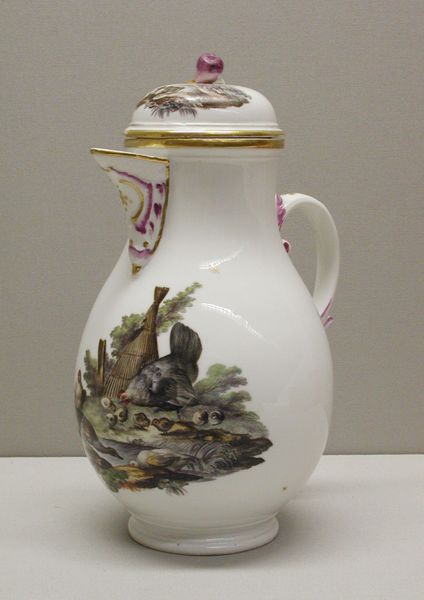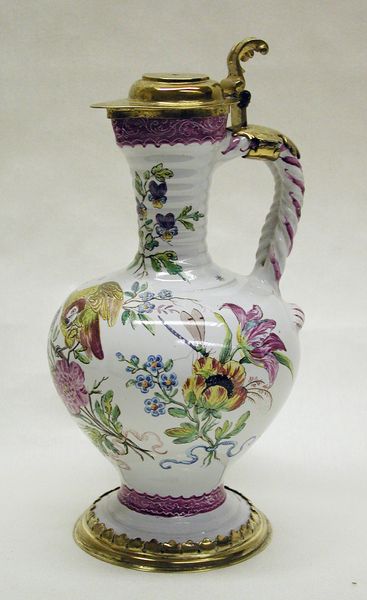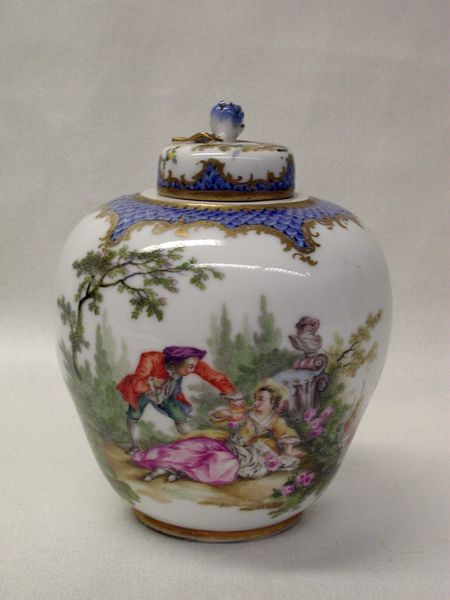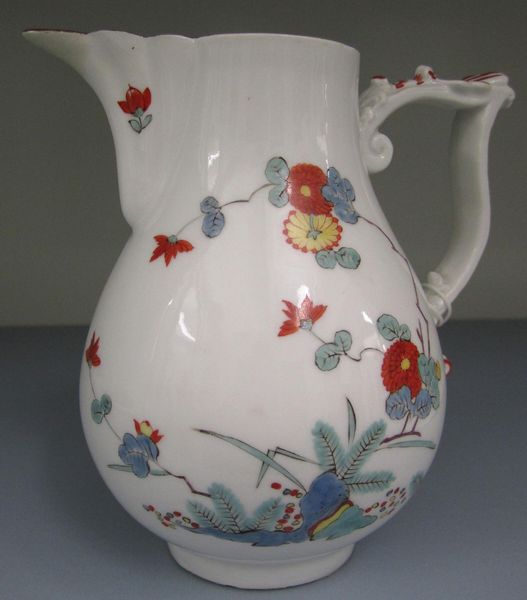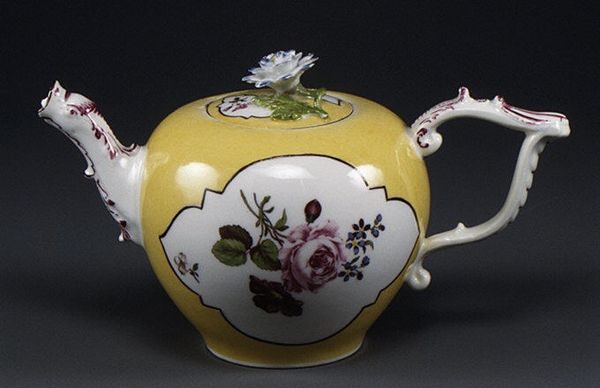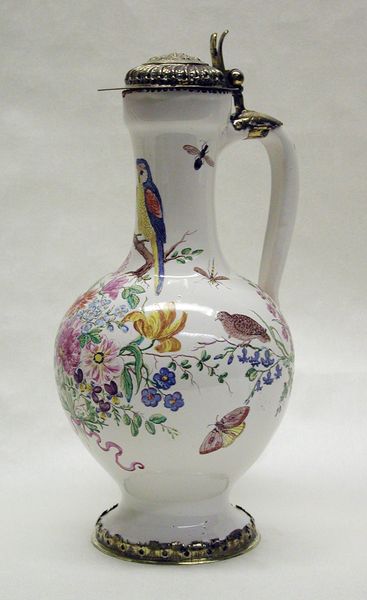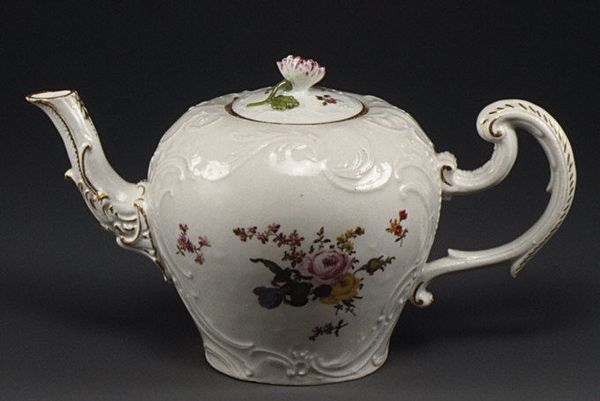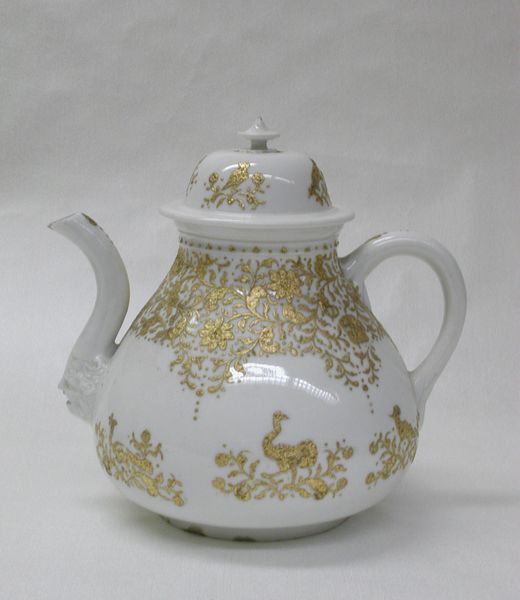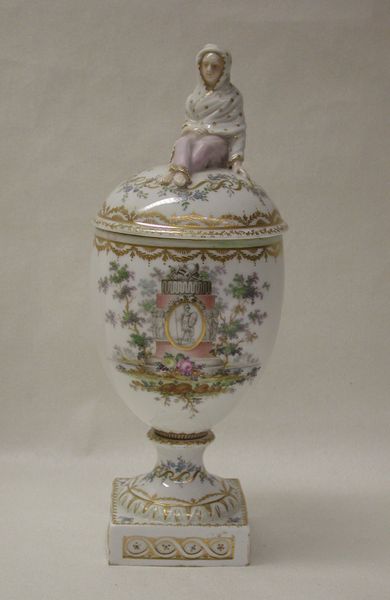
ceramic, porcelain, sculpture
#
ceramic
#
bird
#
porcelain
#
sculpture
#
ceramic
#
decorative-art
Dimensions: Overall (coffepot .1a, confirmed): 8 1/2 × 6 1/2 × 5 in. (21.6 × 16.5 × 12.7 cm); Overall (lid .1b, confirmed): 1 7/8 × 3 × 3 in. (4.8 × 7.6 × 7.6 cm)
Copyright: Public Domain
Curator: Standing before us is an elegant coffeepot created by the Höchst Manufactory between 1770 and 1780. It’s crafted from porcelain, with delicate sculptural and painted elements. Editor: My first thought is one of contradiction! It seems both strikingly elegant and somewhat… macabre. Is that a hunting scene around the base? Curator: Indeed. Porcelain during this era became a canvas for storytelling. Notice how the scenes—though decorative—also echo the societal obsession with courtly life and the natural world, almost like a glimpse into the lifestyle of the wealthy. These hunting scenes would be fashionable depictions, referencing a key pastime of the European aristocracy, albeit on a rather unusual support object. Editor: That's unsettling, isn't it? Considering who might have been excluded from that idyllic vision. I am thinking of the labor conditions involved with extracting materials or forced labor during colonization required for accessing global trade networks involved in this work. It reflects power dynamics— who gets to enjoy this beautiful object and at what cost? Is the depiction of hunted animals somewhat reflective of societal inequality? Curator: That's an incisive reading. Symbolically, hunting can be a complicated visual cue. The birds themselves represent different virtues in traditional iconography - familial harmony, communication, even freedom of thought. But here, their fate is uncertain, changing their resonance. The very shape of the coffeepot becomes a vessel not only for liquid, but for encoded messages. Editor: And how do those messages reverberate today? I keep thinking of the exploitation of both humans and nature. Does the coffee somehow taste different coming from a vessel like this? Perhaps what we are looking at here, with this lovely if loaded coffeepot, is really an argument against historical amnesia. Curator: I believe that it's also worth remembering that the appeal to senses went a long way during the Age of Enlightenment. With porcelain in domestic use, its appeal may have also changed class structures. It offered the growing middle class and merchants a taste of aristocracy. It does reflect, like all good symbols, complex power dynamics with social mobility, wealth, taste, and status. Editor: A reminder of what shapes our tastes, literally and figuratively! It serves both hot coffee and hard truths.
Comments
No comments
Be the first to comment and join the conversation on the ultimate creative platform.
